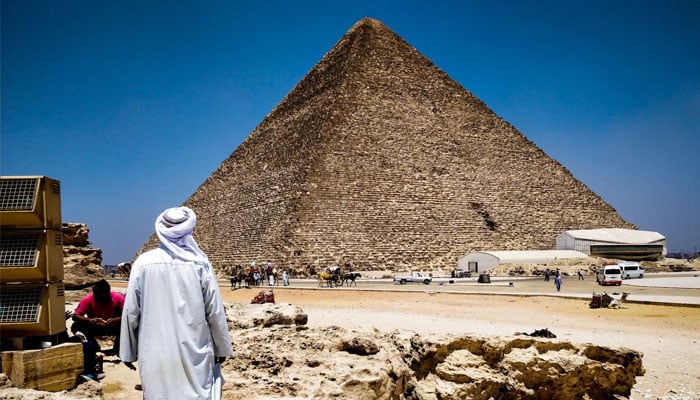
The Egyptian pyramids continue to captivate the world with their immense size, ancient history, and the enduring mysteries surrounding their construction.
Built as grand tombs for pharoahs thousands of years ago, these pyramids still stand today, leaving experts scratching their heads, wondering how these giant structures were built without modern technology.
This remains a puzzle for many experts but maybe not for long.
Recently, a team of researchers at the University of North Carolina suggested that Egypt’s 31 pyramids, including the 450-feet high Great Pyramid of Giza, may have been built along a long-post section of the River Nile, the Daily Express reported.
With their latest discovery, the research team, led by Professor Eman Ghoneim, challenged the previous notion that ancient Egyptians used a nearby waterway to construct these colossal structures.
However, Ghoneim said that up until now “nobody was certain of its locations”.
With the help of a combination of geographical surveys, special technology and historical maps from the surrounding area to help map this hidden part of the Nile, the team further investigated where exactly these pyramids were created.
The team hypothesised that ancient Egyptians used this certain part of the Nile to help transport the massive stone blocks to build these pyramids between 4,700 and 3,700 years ago.
According to Ghoneim, the technology allowed him and his team to further produce images of hidden features under the sand.
Although the exact location may have been buried due to drought and sandstorms thousands of years ago.
The researchers believed the pyramids’ original building location was “buried rivers and ancient structures” found at foothills near to the “vast majority of the ancient Egyptian pyramids”.
Known as the Ahramat branch, meaning “pyramids” in Arabic, it is believed to extend approximately 39 miles long and 200 to 700 metres wide, giving further clues that this theory may be correct.
This new discovery also sheds light on why there were so many pyramids built between Lisht and Giza, an area of the Saharan desert which is synonymous with having extremely difficult conditions to construct such wonders.



